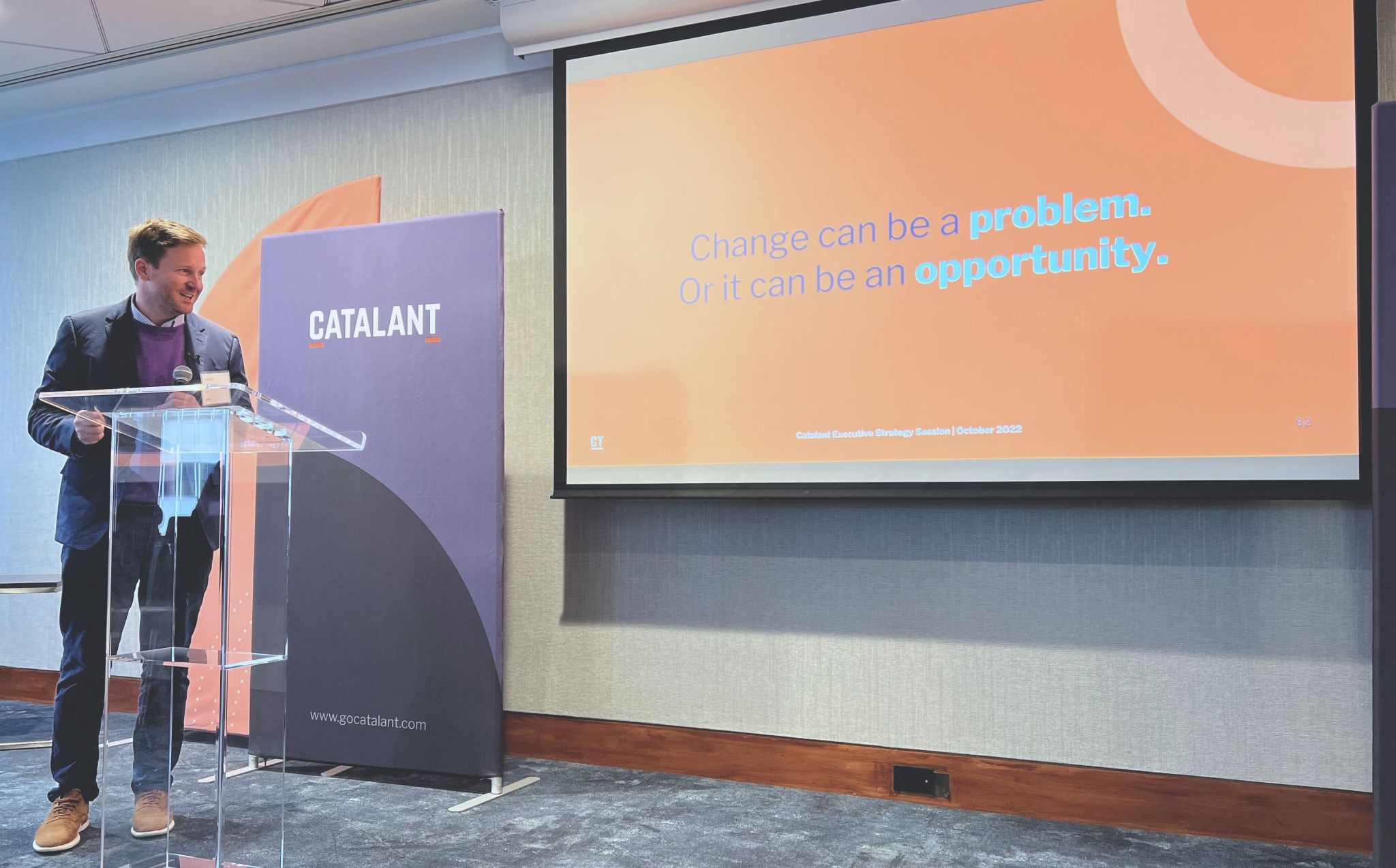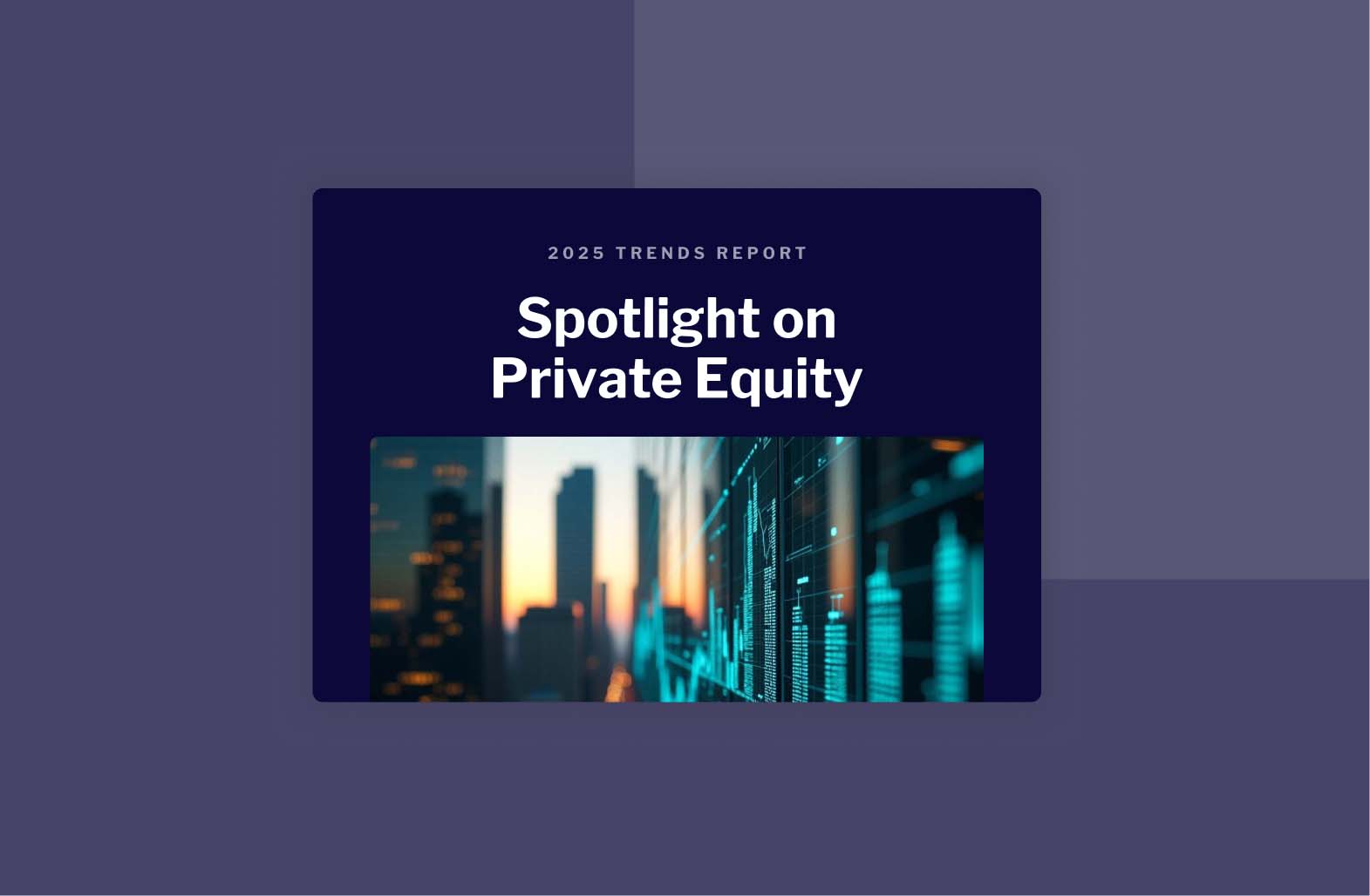Leading through Uncertainty: Key Learnings from Catalant’s Executive Strategy Session

Times of stress inevitably precede times of growth and recovery. Economies around the globe are currently under immense pressure to manage challenges, including a recession, an energy crisis, supply chain disruptions, evolving workforce dynamics, and more. Business leaders are considering not just how to weather the current climate, but how to succeed in the recovery period to follow. Unpredictable times impact every industry and business differently, and although trial and tribulation are inevitable, there are also ways to use uncertainty as an opportunity for both short-term and long-term success. This was the basis of Catalant’s 2022 Executive Strategy Session in New York City.
At this event, we gathered over 50 SVP and C-suite level business strategists — including Catalant customers, advisors, and Experts — to discuss how to turn widespread uncertainty into an advantage and which strategies to deploy to come out on top. In a previous blog post, we shared data from Catalant CEO Pat Petitti’s presentation on turning uncertainty into an advantage – here we’ll elaborate on additional insights presented by David Mallon, Frank D’Souza, and Nitin Nohria.
To focus the day’s conversations, all Executive Strategy Session attendees were surveyed prior to the event about the challenges they’re facing. Here’s a glimpse at how they answered:
- Nearly 50% of respondents say they have had budgets cut.
- Over 1/3 say hiring has been frozen at their organizations.
- Over 40% say they’re unsure if their organization has the right people to get critical work done during this time of profound change.
Executing critical work has become a balancing act of resources – not just in terms of budget but in talent as well. The following insights offer some tactics to consider in this environment.
Top Learnings from Catalant’s 2022 Executive Strategy Session
1. Focus on outcomes rather than job descriptions.
Insight from David Mallon, Chief Analyst and Offering Leader, Insights2Action at Deloitte Consulting
The pandemic has forced organizations to question what critical work to assign their best people to and what resources to allocate to them. This leads executives down a path of asking employees to complete projects outside of the scope of the jobs they were hired for. Job descriptions often don’t truly match the work that is getting done — and if they did, that didn’t tend to last very long. Leaders are beginning to value their workforce’s adaptability more than ever before.
Rather than continuing to center hiring organizations around this notion of restrictive job descriptions, leaders would benefit from thinking of adaptable skill sets and business outcomes. Companies starting to play with this notion must ask themselves the following questions:
- What skills do I have access to already?
- What skills do I possibly have access to?
- What skills may I need access to?
Evaluating their existing talent ecosystems this way gives their workforce opportunities to drive the most valuable business outcomes outside of the confines of job descriptions.
2. Rally your organization around hope rather than fear.
Insight from Francisco (Frank) D’Souza, Managing Partner and Co-Founder at Recognize
Fear is contagious. But success is more contagious. If you can get fear out of a system and hope into it, you can do anything.
Frank D’Souza
This quote from Frank D’Souza’s presentation reiterates why it’s important for organizations to rally around keeping employees happy and motivated during times of uncertainty. At Cognizant, during the 2008 financial crisis, the team successfully managed change while considering the psychology of the team by establishing a notion of heroes, rituals, and legends. Here’s the methodology in practice:
- Heroes: Place your best people on key initiatives. Put them up on pedestals across the organization to be viewed as role models and drive a sense of pride.
- Rituals: Establish regular meetings with cross-functional strategic leaders to openly discuss progress or roadblocks. Never waver from the ‘ritual’ of this open dialogue.
- Legends: Encourage company-wide sharing of progress and success stories. Out of this, internal legends are born.
Additional tactics were implemented alongside this methodology — volunteerism allowed employees to feel as though they were helping the world during a time of fear, while transparent leadership communication helped alleviate feelings of uncertainty.
3. Understand the new social contract required in today’s workforce.
Insight from Nitin Nohria, Executive Chairman at Thrive Capital and Former Dean of Harvard Business School
Up until the 1980s, the workforce was defined by loyalty — the goal was to become employed at a major organization and stay there for 30+ years. Then the workforce moved into a period where employment relationships were defined by economic incentives – the better an employee performed, the more they were paid. This required great focus and commitment among employees toward the company that they worked for, and this dynamic remained up until COVID-19 hit. The pandemic caused people to question the concept of putting their jobs before all else.
Today, there is a new social contract appearing between workers and organizations that is not yet fully developed or defined. Nitin Nohria, former dean of Harvard Business School and Partner and Executive Chairman at Thrive Capital, discussed this contract and two elements that would be critical to employee success:
- Self determination: People want to determine where and how they work.
- Self control: People want to decide how much time they’ll put into work, where they work, and when they want to work.
Today, employees are giving more to their employers when their sense of purpose is aligned with company goals and values. When the alignment isn’t there, that’s when trends like “quiet quitting” arise.
The growing gig economy is a clear manifestation of these changes. Employees and organizations have begun thinking about corporate problem-solving in terms of a series of projects or gigs. Employees assess each task they’re given and decide whether it will be exciting or compelling for them before determining how much of themselves they’ll pour into that work.
“All kinds of work, even work that we previously thought was professional work that had to occur with an employment relationship, is probably going to occur in a very different way.”
Nitin Nohria
These are only a few of the several valuable discussions that surfaced throughout the Executive Strategy Session regarding navigating uncertainty, the future of work, and more. To read the highlights from Catalant CEO and Co-Founder Pat Petitti’s presentation on Turning Uncertainty into an Advantage, click here.
Learn more about how Catalant can help your organization adapt to these trends and plan for long-term success.
Let’s TalkRelated Articles
Share Article











